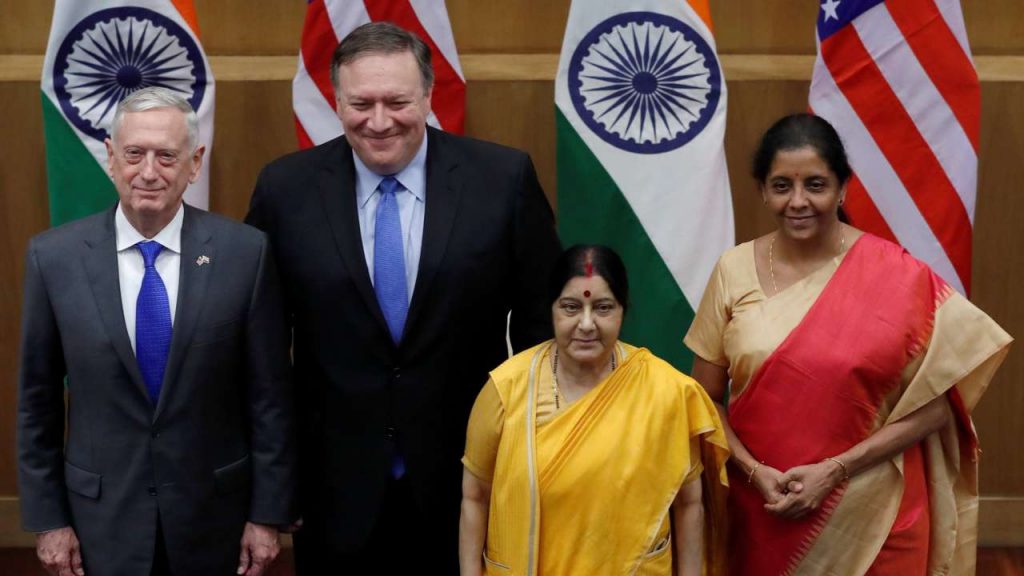Indicating that the US is keen to strengthen its position in the Indo-Pacific region, America under the Donald Trump administration moved ahead and sealed the long-pending Communications Compatibility and Security Agreement (COMCASA) with India. This development took place as the two countries held their first two plus two dialogue, involving External Affairs Minister Sushma Swaraj and Defence Minister Nirmala Sitharaman from India and Secretary of State Michael Pompeo and Defence Secretary James Mattis from the US in New Delhi on September 6, 2018. COMCASA is the second major defence agreement the two countries has signed after inking a pact on Logistics Exchange Memorandum of Agreement (LEMOA) in August 2016.
While Defence Minister Sitharaman described COMCASA as one which would allow India to enhance its defence preparedness, US Secretary of State Pompeo termed it a “milestone”. One of reasons cited behind signing of COMCASA with the US is that it will help India mollify the Trump administration which has threatened to impose sanctions on India if it went ahead to buy S-400 triumf surface-to-air missile from Russia. How far it proves to be a bargaining chip between India and the US, has to be seen in days to come. But it is said that during the maiden two plus two dialogue, the issues like Russian S-400 missile defence system didn’t crop up.
Also Read: Women power at Indo-US 2+2 Dialogue
Significantly, on August 25, Foreign Secretary Vijay Gokhale had made “unnoticed” visit to Russia. It is understood that the visit was undertaken to brief Russians about India’s decision to sign COMCASA. Besides, buying S-400 surface-to-air missile system, India is to purchase 200 Kamov lightweight multi-role helicopters from Russia. Negotiations are also on for the purchase more defence technologies from Russia. In fact, the two countries will see signing of a few agreements when President Vladimir Putin visits India in October for the annual talks. More than 60 per cent of India’s armaments are of Russian origin. It is said that to stop India from leaning too heavily on Russia for its defence requirements, Washington has signed COMCASA with New Delhi. With this, the two countries will be able to share high end encrypted communication and satellite data; it will help give a legal framework for defence technology transfer and enable India to optimally utilize its existing US defence platforms. Only NATO countries are able to have such US facilities.
While this is hailed as a significant step in Indo-US relations, it has taken place at a time when the US together with Japan and Australia is trying to win India over for its joint infrastructure scheme in the Indo-Pacific region to counterbalance China’s Belt and Road Initiative. It should be remembered that in his Shangri-La Dialogue speech in Singapore early this year, Prime Minister Narendra Modi had categorically said that India would not be part of any block which could be seen as “us versus China” move. This sentiment remains intact or not is matter of conjecture. But After COMCASA, what is another major development of the two plus two dialogue between India and the US is the assurance given by American officials to Indian counterparts on the NSG issue. In Latvia where the NSG held its plenary meet in June, India could not make any headway. In December, the 48-member non-proliferation group is again going to have a special meet, India will like that its application for the membership is accepted. At the time when the US and China are engaged in their worst trade war, how Washington’s assurance to New Delhi on the NSG membership issue shapes up has to be seen. Nonetheless, India is the third country after Japan and Australia with which the US has two plus two dialogue facility.
Disclaimer: The opinions expressed in this article are the personal opinions of the author.


















